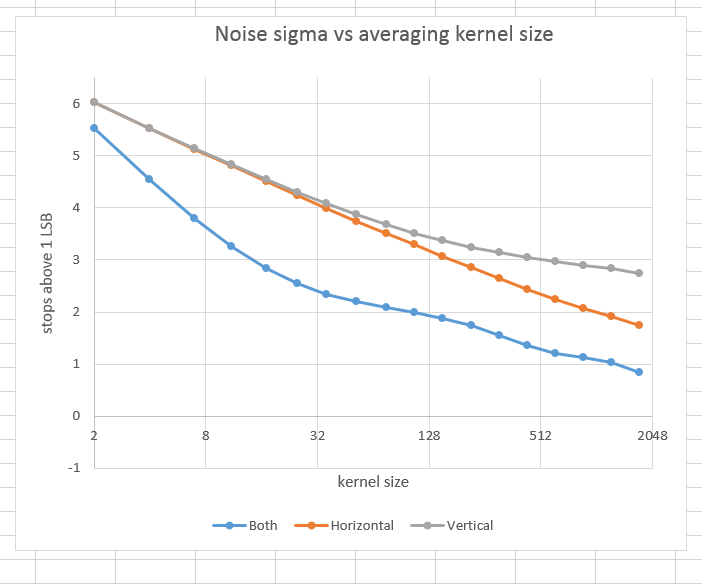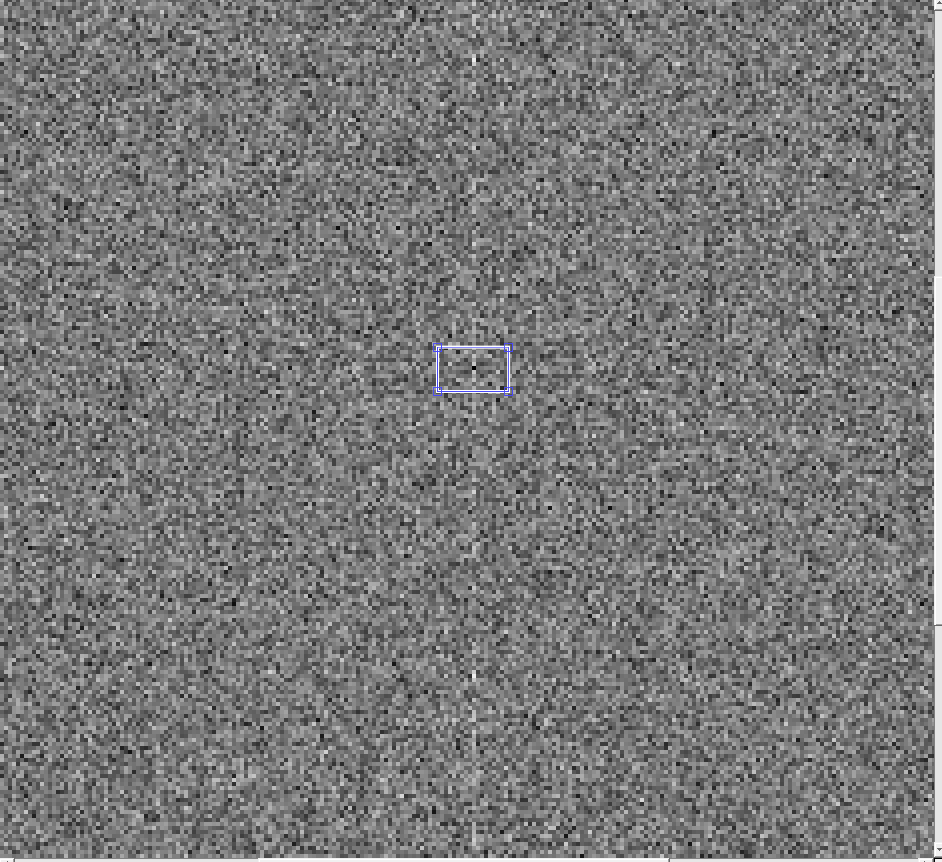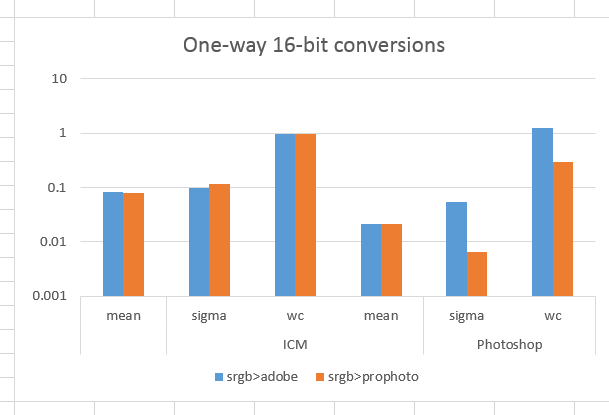A reader commented on the previous post, and posted this link to a web page where he analyzed the spatial aspects of the read noise on a Sony NEX-6. He contends, with excellent justification, that the construction of the sensor on that camera, and sensors with similar column-parallel ADCs, creates more low-frequency read noise in… [Read More]
Archives for 2014
In search of a read noise ugliness metric
Beauty is in the mind of the beholder, so ’tis said. I guess ugliness must be as well. Maybe I’m on a fool’s mission, but I’d like to figure out a way to mathematically calculate the visual effect of read noise. If you look at the histogram of dark-field noise for a digital camera, providing… [Read More]
Color space conversion accuracy — summary
Unless something comes up, I’m done with the color space conversion accuracy work. I’ll use this post to summarize what I’ve found over the last couple of weeks and link to the posts with the details. The first conclusion is that, using 16-bit precision, for all colors within the gamut of both the source and… [Read More]
On dynamic range — a guest post
Today we have a guest poster, Jack Hogan. Over on the DPR forum, a question has been asked, and argued endlessly: when faced with a 16-stop intra-scene dynamic range, what’s the dynamic range of an image captured with a 14-bit camera? Jack responded with a little Chautauqua on how a camera works that I thought… [Read More]
ICM vs ACE
In Photoshop, as installed under Windows, You can choose between Adobe’s ACE color engine, and Microsoft’s ICM when performing color space conversions. I have been using ACE up to now. I wondered if ICM could produce more accurate results. In a word, no. I took the 256 million color sRGB noise image that I’d created… [Read More]
- « Previous Page
- 1
- …
- 9
- 10
- 11
- 12
- 13
- …
- 62
- Next Page »


